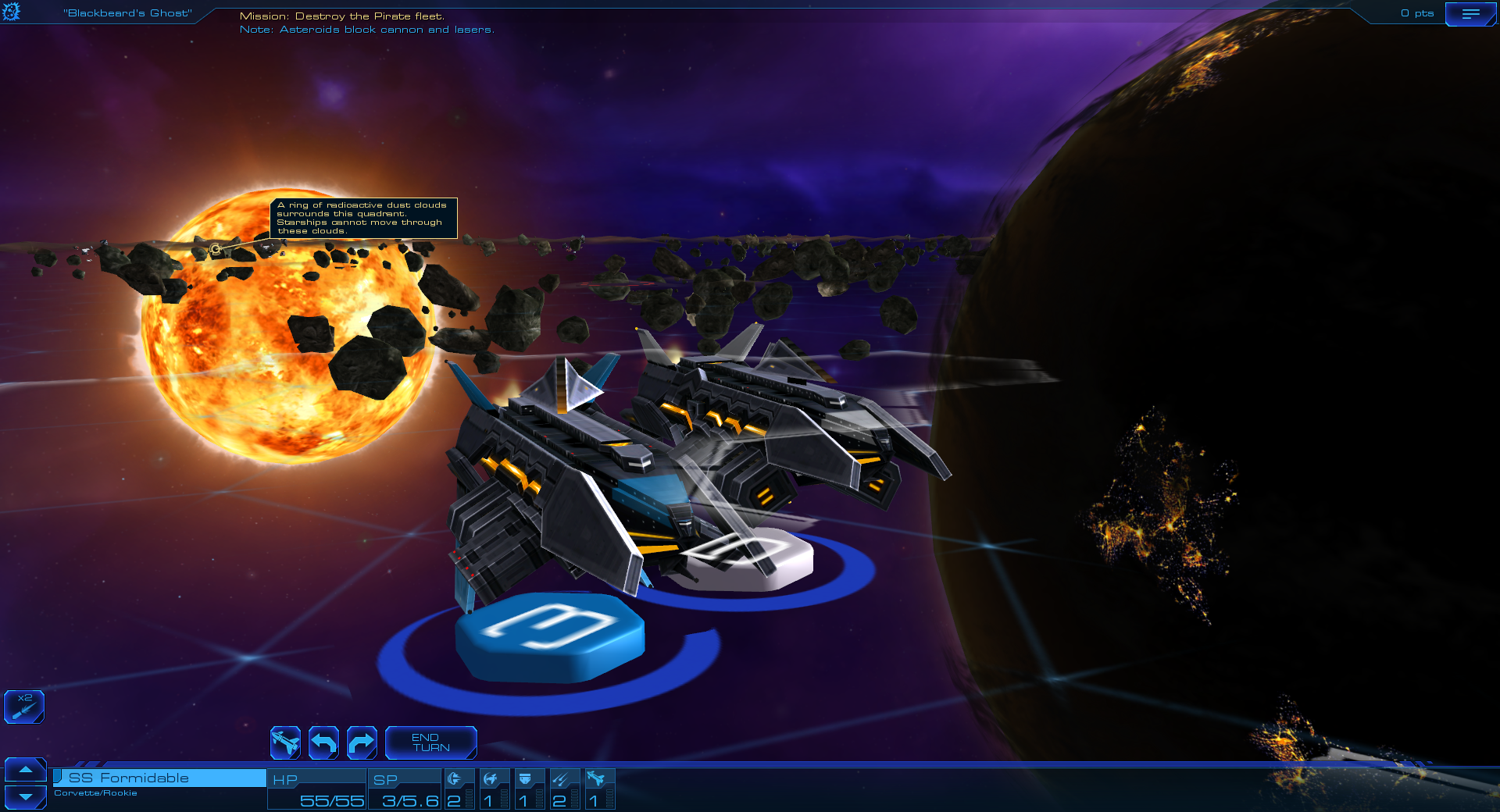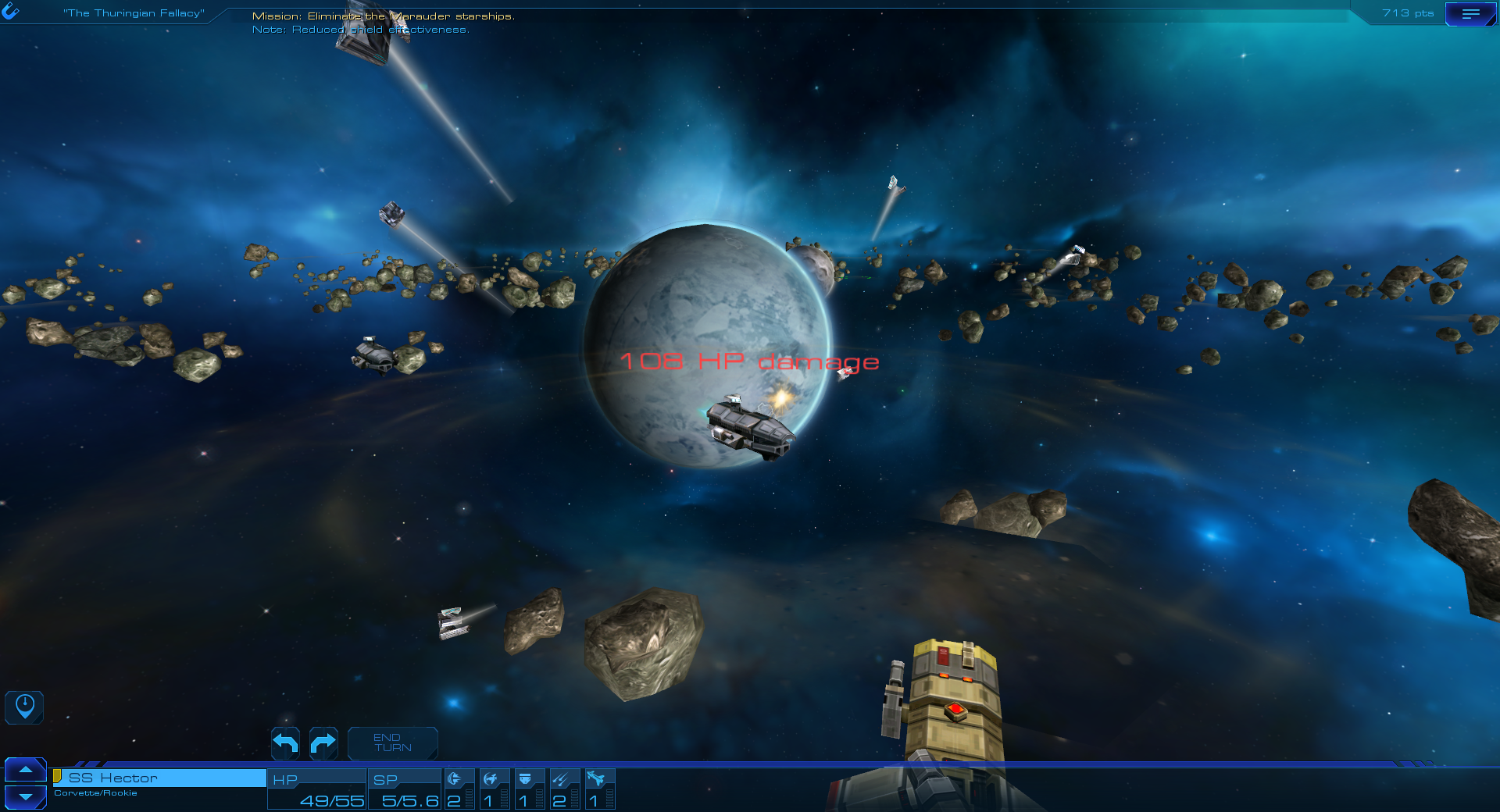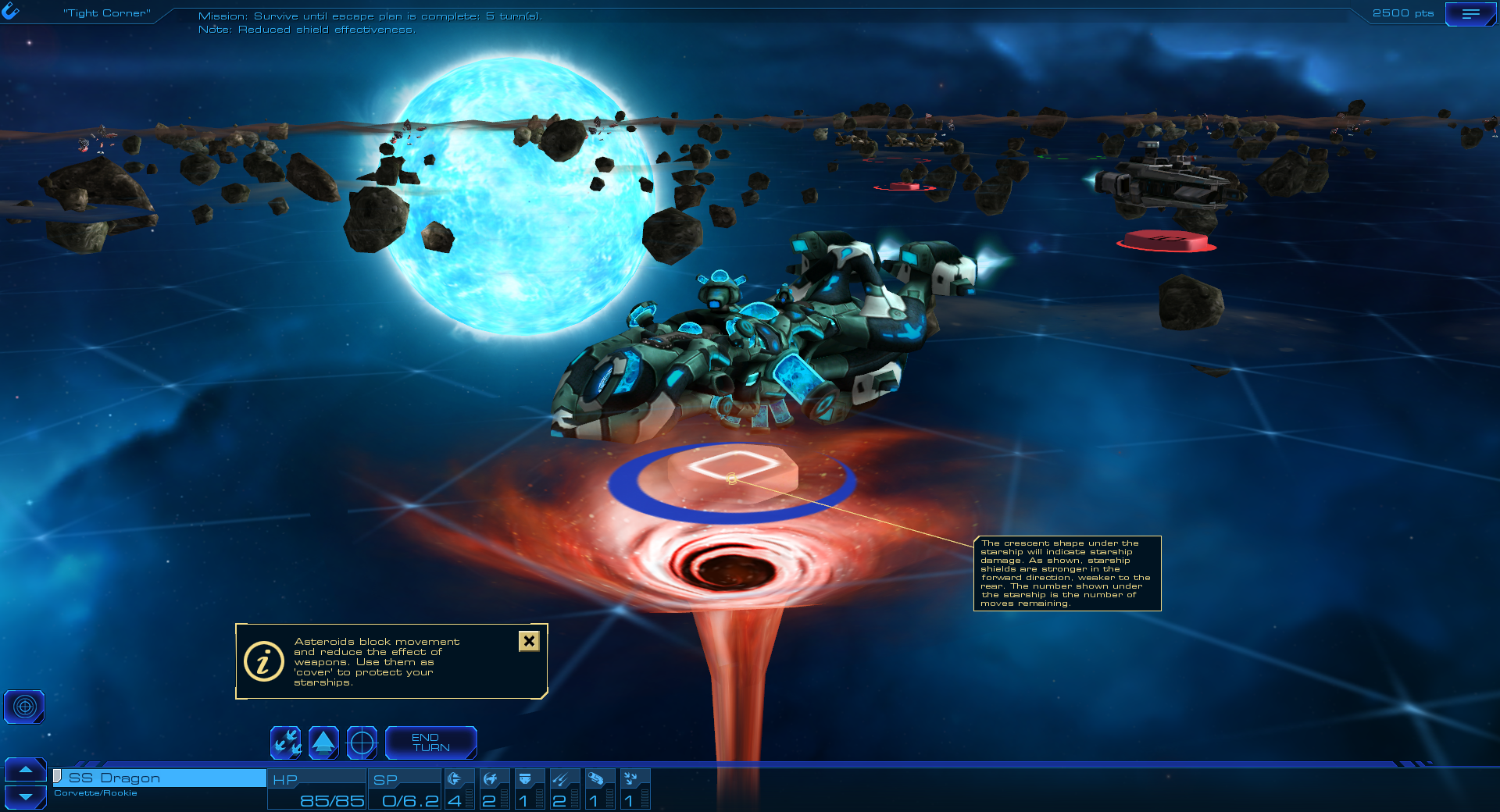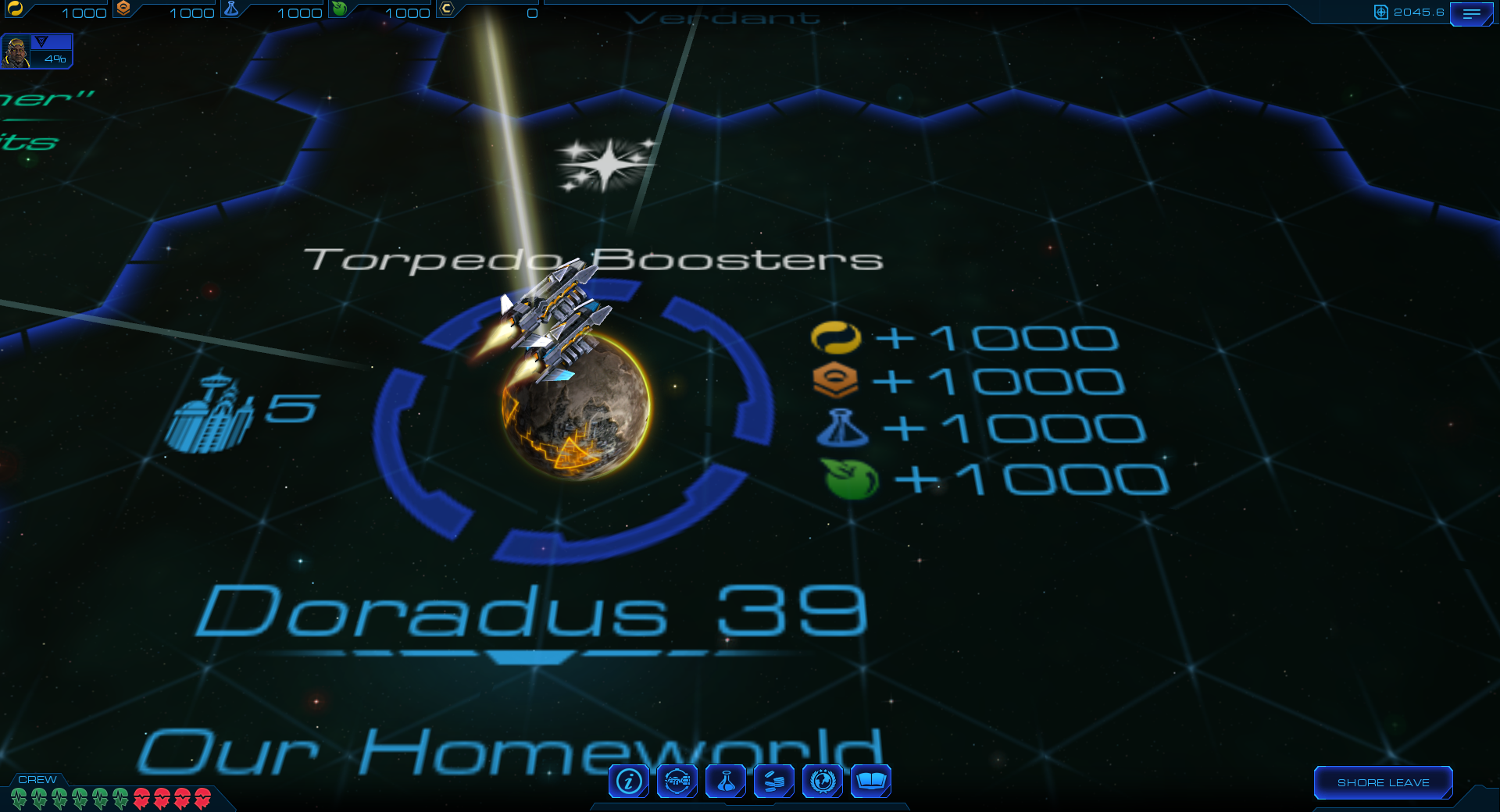Strategy and exploration in Sid Meier's Starships

Civilization: Beyond Earth is about planets, but Starships, the latest strategy game from genre godfather Sid Meier, is about galaxies. You start a new game at the end point of a Beyond Earth game. Your civilisation has won and taken control of the planet, and a thousand years have passed. You’ve developed new starship technology, and now your sights are set on other planets. If a game of Beyond Earth is a story about one world, a game of Starships is a story about /multiple/ worlds.
“When I was ten or eleven, the original Star Trek came on TV, and I used to rush home on Friday to watch it,” says Meier. “That’s a p+retty impressionable age, and I remember really enjoying the show. That was probably the biggest influence on Starships. When designing a game, I often ask myself: who is having the most fun? And here I decided it was probably the admiral leading the fleet of starships.”
As you explore this new galaxy you’ll run into other civilisations who were once part of the ‘seeding’ that formed the basis of the story in Beyond Earth. They’ll have their own technology, politics, and desires. Some might happily share a world with you, while others will protect their turf with deadly force. It’s Civilization on a much grander scale, although the game itself is smaller in scope.
Meier is developing Starships with a small team. He tells me that he’s always coding something. He loves the prototyping stage of design, during which he pulls images from Firaxis’ art cache or Google and brings them to life. He loves programming systems and AI, and it’s the roaming exploration aspect of Starships that attracted him to the project. While a lot of veteran game designers take a step back from the actual production of a game to become a director or producer, Meier still gets his hands dirty.

“Beyond Earth begins with thousands of expeditions leaving Earth to settle other worlds,” he says. “But what happened to all those other settlements? That’s one of the questions Starships will answer.” Like Civilization, Starships promises to be as much about small, emergent stories as it is about conquest on a grand scale. “The story is largely told by the player’s decisions and actions,” says Meier. “We create a setting and a universe, and let the player face off against different factions to create their story.”
It may be possible to exist peacefully in this galaxy, but it’ll be difficult. Just like in a game of Civ, conflict is often unavoidable, and combat will be a big part of the Starships experience. “Combat is really the heart of the game,” says Meier. “The strategy systems and what happens outside of combat directly feeds into your fleet and its capability. This creates a loop where victories in combat give you more strategic capability, which in turn makes you better at combat. That rolls together very nicely and is a lot of fun.”
Replayability is something Meier and his team are striving for. Affinities, returning from Beyond Earth, will inform your play style. “We use the affinity system as a way to customise your federation,” says Meier. “The idea is that the affinity you choose is the affinity that led you to victory in a game of Beyond Earth, and now you’re ready to move outside your world, out into the rest of the galaxy.”
Keep up to date with the most important stories and the best deals, as picked by the PC Gamer team.
Purity admirals are diplomats, and their emphasis on the heritage of humanity gives them double mission rewards. Harmony fleets focus on the interrelatedness of all living things, and their bonus is repairing their ships at half the cost. Then there’s Supremacy, who are leaders in technology and construction, and start the game with a random wonder. But your choice of affinity won’t restrict you in any way. You can still play how you want to play, a freedom that’s a crucial part of all of Meier’s games.

But no matter how you decide to play, you’ll always have one thing on your mind: victory. “There are a number of ways to win,” says Meier. “There’s the traditional Domination victory, which carries over from Civilization. Here you win by taking out all the other factions. There’s also the Wonder victory, where you control seven wonders. The Science victory is won by unlocking three level six technologies. And finally there’s the Population victory, achieved by having a large amount of people in your empire.” Like Civ, you’ll be alerted when other factions make progress towards these victories. Take too long to reach your own victory and you’ll lose the game.
The road to a victory will be different every time you play the game. “There are a lot of different choices you can make,” says Meier. “These range from the affinity you choose, to your faction, to the starships you build, to the difficulty level you choose.”
The idea is that when you finish a game, you’ll always have an idea in the back of your head about how you’re going to play differently next time. Good strategy games, according to Meier, are the ones that keep your mind on the future. He doesn’t want players only reacting to what’s happening in the present, which is why he prefers turn-based games. They give players the time and space to always be planning ahead.
An interesting twist in Starships turn-based combat system lets you detonate torpedos several turns later, to blow up enemy ships or destroy asteroid fields to give you a new route through a battlefield. Battles take place on a hex grid, and things to consider while you move around include wormholes that zap you instantly to another part of the map. Sometimes it’ll be safer to use a turn to fly through one of these and escape than it would be to stand and fight.

Land at a new planet and a random mission will pop up, which you can choose to accept or ignore. Complete the mission and you’ll be rewarded, so if you save a colony from some invading pirates, you’ll get tech or money in return. Land on a planet that’s already occupied by another faction and you’ll enter a Civ-style diplomacy screen, and you’ll have to come to an agreement. Do you want to share the planet, or fight their fleet and try and drive them out of their territory? Where once you fought over land masses, you’re now battling for the right to rule whole planets.
Starships doesn’t have the slick, contemporary, big budget feel of something like XCOM, and reminds me a lot of classic ‘90s PC strategy games. I get a sense from the look and feel that it’s a pet project for Meier that’s being made on the side. But that doesn’t mean it’s lacking ambition. There’s a lot of depth here, including the ability to customise your starships. You can improve their engines and weapons, which will help you fly further into space and defeat tougher enemies.
As well as other factions, there are pirates to contend with out in the uncharted depths of the galaxy. There are no alien fleets, though, thankfully. “The other factions in the galaxy are all humans from other seeding expeditions,” says Meier. “There aren’t any aliens, although some of those Harmony guys are maybe a little less ‘human’ than everyone else.” Meier is writing Starships’ rich backstory based on Beyond Earth, and some familiar characters will return. How are they still alive a thousand years later? He says not to worry about that too much. It is sci-fi after all.
If it’s set in space, Andy will probably write about it. He loves sci-fi, adventure games, taking screenshots, Twin Peaks, weird sims, Alien: Isolation, and anything with a good story.


